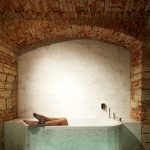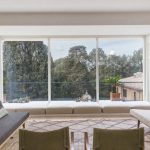
One Fine Day designed this stunning modern family residence located in Dreieich, Germany, in 2017. Take a look at the complete story after the jump.
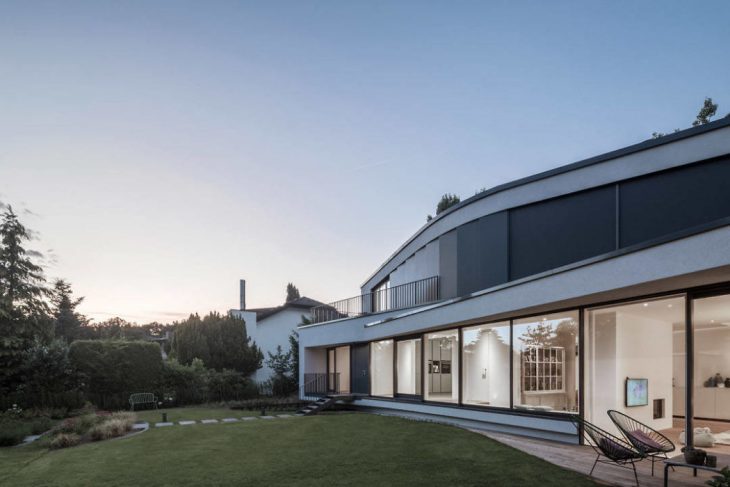
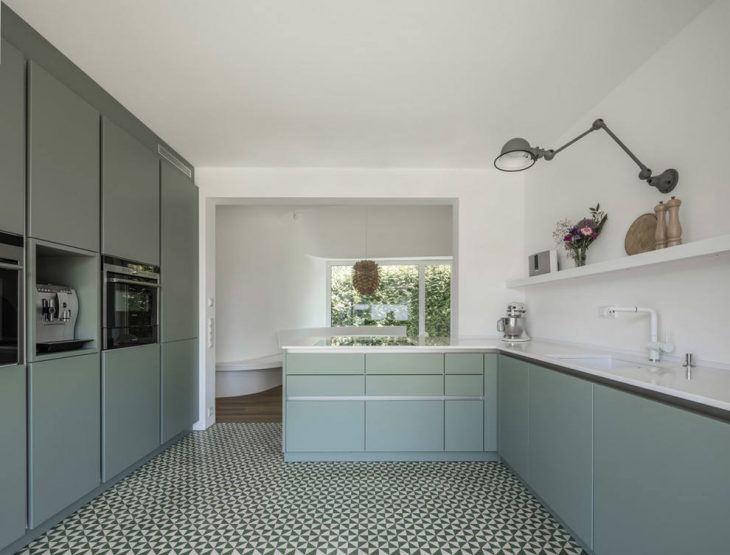

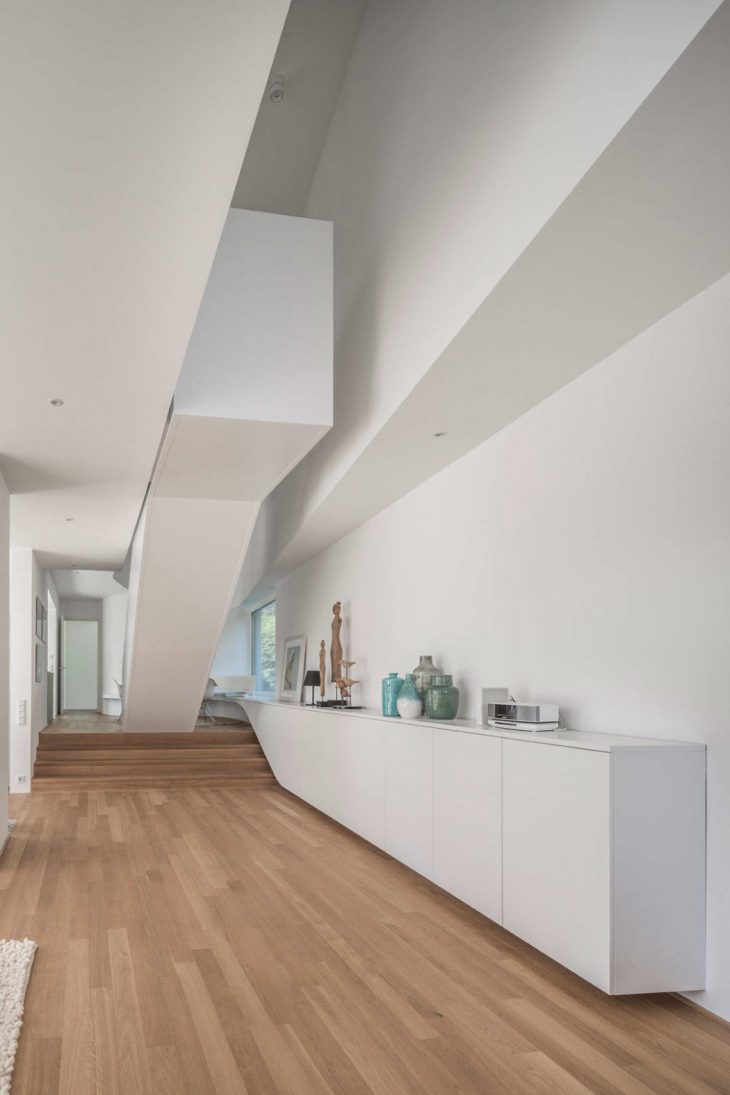

From the architects:
Settlements
Haus B is located in in the town of Dreieich, within the vicinity of Frankfurt am Main, Germany. Here the house is embedded in a quite typical suburban housing settlement that had been developed during the 1960s. Today, this settlement depicts both: the aesthetics of an increasingly wealthy, yet rather conservative and homogeneous suburban society during the so-called “Wirtschaftswunder” of post-war Germany; and a heavily plural and individualist approach towards the aesthetics of one’s own house that manifests itself in a rather eclectic collage of styles since the 1990s.
The former local societal, cultural and aesthetic conventions of the1960s reflect themselves in a rather homogeneous array of small-scale bungalows and houses with allegedly local stylistic elements, such as gabled or hipped roofs and a rather rustic-style use of materials. On the other side a much more differentiated and somewhat reckless approach to size and individualized aesthetics has filled empty plots but also replaced existing houses since the 1990s. Thus, Haus B finds itself in an apparently homogeneous, yet at least architecturally also quite ambiguous neighbourhood. Here it has to balance the needs of contemporary living and aesthetics with the cultural and formal implications of a grown context that is typical for many suburban settlements throughout the region.
Geometry
Haus B is based on strictly ordered geometrical relations that allow for a certain degree of elasticity in order to respond to the different demands of, the client, the place, or the building authority. As it is conceived of a careful reading of the place, the house needs to respond to the rather technical influencing factors of its site as well. The building stretches as an elongated volume from north-west to southeast and exploits solar gains while it protects the garden from the noisy street at its north side. The slightly deformed volume adopts the directions and comparably low heights of the neighbouring eave-lines. It is then raised at its centre in order to softly translate the obliqueness of the neighbouring roofs and blend them with the advantages of an explicitly modern flat roof. The resulting curvilinear geometry is translated into the geometric logic of the plan as well. Here, the interweaving of the main directions introduced by adjacent buildings creates different outside spaces that are set in close relation to Haus B’s interior organization. In this way, the house formulates a wide-open front-façade along its south side that articulates most of the relevant interior-exterior-relations. In order to reduce energy-losses while simultaneously embrace the warming eastern morning-sun these relations are limited to carefully selected framed views at the building’s north side.
House and Garden
The site is accessed over its south-western corner trough a small forecourt that, together with an adjacent garage, performs as a buffer-zone. From here Haus B is accessed straight through the garden. This means that the house’s south-façade has to solve several important, yet contradictory functions at once: it has to be inviting and representative as it organizes the casual cohabitation of an everyday family-life. Here, the exploration of different outside spaces, such as the porch that preludes the front-door, the terrace that enlarges the adjacent living-room, the roof-terrace that completes the master bedroom and the roof-garden in front of the children’s rooms is used for both: it strengthens the connection of house and garden as well as it defines the building’s ‘Gestalt’.
Interior
The interior of Haus B is closely connected to this zone of transition. From here several well-known housing-typologies, such as an enfilade along the glass-façade, a gridded array of rather functional spaces, or a double-height space with gallery and open stair – all stretched across a split-level – blend to form a comparably rich and continuous living-landscape. This seamless overlapping of functions and typologies demarcates and encloses rooms as it creates rather ambiguous open zones, which again provide quiet places as well as organize multiple stages for the special moments in the life of a family.
In order to strengthen the interaction between the house and its inhabitants some often merely functional elements are slightly exaggerated. The kitchen, for instance, is located in the centre of the house and, as a walk-through-room, establishes as many direct connections to, the entrance-hall, the dining, the living-room and the garden as possible. The stair that reaches the upper floor, takes another central position and constricts the void between living and dining with its rather sculptural compactness. Here, where the void becomes a crevice, the suite of the nearby dining extends its bench into the living room to become an elongated cabinet. It is a somewhat surreal object that answers the playfulness of the plan.
Material
The comparably sculptural exterior form is accompanied with a deliberately unexceptional and site-specific choice of materials and colours. The exterior plaster walls are painted off-white and show a rather rough texture. Together with its dark grey window-frames, sills and parapets, the house adopts the typical colour-contrast of the neighbourhood.
Accordingly, the rather complex spatial setting of the interior living landscape is answered by a neutral material palette. The white plastered walls and oak floors guarantee for a rather cosy basic tint. Only the kitchen with its dark green surfaces and traditional cement tiles shows a much more articulate approach to colour and texturing. In this way the spaces leave enough possibilities to be fashioned according to the taste and preferences of the inhabiting family.
RELATED: FIND MORE IMPRESSIVE PROJECTS FROM GERMANY
Ecology
Haus B has been conceived and equipped to exceed the requirements of the latest German energy saving regulations (EnEV). It has been directed towards south/south-west in order to gain as much as possible solar energy during winter, whereby the projecting roofs and adjustable canvas blinds protect the interior from the sun during summertime. Next to the application of durable materials all exterior wall and roof surfaces contain up to 20cm thick layers of thermal insulation. All windows are at least double-glazed. A heat pump driven by solar panels provides the house’s heating and warm water-supply.
Photography by Roland Borgmann
Find more projects by One Fine Day: o-f-d.net


